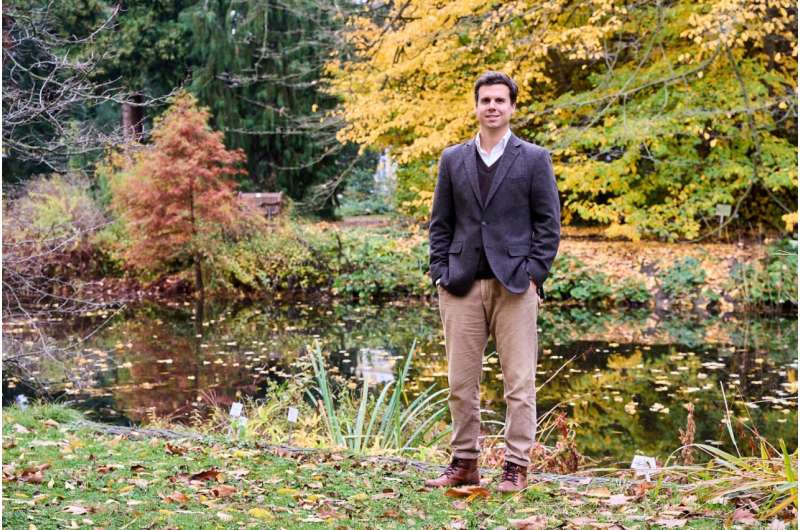This article has been reviewed according to Science X's editorial process and policies. Editors have highlighted the following attributes while ensuring the content's credibility:
fact-checked
proofread
The two (country) sides of forests: How do public policies influence conservation?

How do national policies impact deforestation? Researchers from the University of Bonn have looked into this question at the global scale and have found that, contrary to common assumptions, national strategies have a significant—and visible—influence on efforts to protect forest heritage. Their study has now been published in the journal Global Environmental Change.
A picture is said to say a thousand words, and researchers led by Professor David Wuepper from the Land Economics Group in the Institute for Food and Resource Economics at the University of Bonn took this as their inspiration to investigate the impact of national policies on forest coverage. They had the idea of using satellite images to analyze forests along the borders between countries.
"Ecological zones are often very similar across national borders," explains David Wuepper, who was appointed to a new professorship in the University of Bonn's PhenoRob Cluster of Excellence as recently as April 2023. "If you have a healthy forest on one side of the border and a completely barren landscape—to exaggerate slightly—on the other, this is often because of the different policies pursued by the two countries."
Professor Wuepper's group started by gathering large volumes of data together with its research partners. The team from ETH Zurich evaluated 20 years' worth of satellite data on forests in border regions all over the world to find out how the population and condition of the trees had changed.
While they were tackling this, Wuepper's research group was working its way through the various countries' policies on forest conservation. Besides relevant legislation, they also considered programs that have an indirect impact on forest coverage, such as those that give landowners financial incentives to protect trees on their property.
Before/after comparison
To undertake their analysis, the researchers first looked to see whether there were any changes in the border regions. Has forest coverage increased or decreased? Has it grown more or less healthy? Along some borders, such as that between China and Russia, differences are easy to spot on the satellite images. While the Chinese side is a lush green, the Russian side is bathed in orange and red—the sign used in the study for deforestation.
"However, changes like this aren't necessarily down to specific policies," Wuepper points out. "There are other reasons too. For instance, is using the forest important to the country's economy? Does it have the resources and infrastructure to manage forests in the first place?" Since policies are introduced at clearly defined moments in time, however, a before/after comparison lends itself well to such an investigation. In other words, a sudden or significant shift after a new policy was brought in can be explained by the change in strategy.
In the case of China and Russia, this is easy to spot: while Russia has been constantly exploiting its forests, China has moved its policy more toward protection. "China had huge problems with soil erosion caused by the loss of its forests," Wuepper explains. "To combat these, it finally launched some massive reforestation schemes to halt this erosion. The policy U-turn is clear to see from the pictures."
Equally clear are the study's findings: national policies are the main explanation for dramatic changes in the tree population along country borders. According to the researchers, however, there is extreme variation in how well these policies work. "The two most important explanations for effective national policies are how strict they are and whether they really are implemented in the way they were presented on paper."
Brazil is a good example. Following years of overexploitation in the Amazon rainforest—due mainly to illegal logging—the government began to take tough countermeasures, introducing satellite surveillance and deploying the military to tackle lawbreakers. The move led to a sharp fall in deforestation. These rules were watered down again under President Jair Bolsonaro, and the progress made was squandered.
The study shows how important national governments are to the protection of our forests. "This is a significant insight," says Wuepper, summing up his team's findings. "Over the past few years, there has been this general impression that national governments are largely powerless and that relying on national policymaking was seen as almost old-fashioned in a way. Yet national policies are a key cornerstone of forest conservation. Although they can't replace other initiatives, of course, they can complement them in a game-changing way."
More information: David Wuepper et al, Public policies and global forest conservation: Empirical evidence from national borders, Global Environmental Change (2023). DOI: 10.1016/j.gloenvcha.2023.102770
Provided by Rheinische Friedrich-Wilhelms-Universität Bonn





















